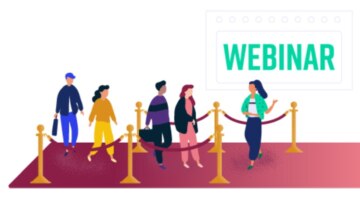At 7:11 a.m. MT on Wednesday, March 18, John Mellor was driving west on I-80 and nearing Salt Lake City when his phone started to blow up.
When Domo’s chief strategy officer got a chance to pull over and check the messages, they were all about one thing: The 5.7-magnitude earthquake that rocked central Utah just before sunrise.
Mellor didn’t feel the ground shake as he was heading down Parleys Canyon. But the timing was fitting. Because over the course of the previous month, he had certainly become familiar with seismic shifts.
Domo, a leader in business intelligence and data visualization, turned its annual conference, Domopalooza, into a virtual event in less than two weeks. Scott Resch, Ambassador of What’s Happening, Domo, shares with us how the company made the shift in record time. This article was originally published on Domo.com. Shared with permission.
It all started on Feb. 20, when Domo CEO Josh James traveled to Tokyo for meetings and was struck by how the entire population was wearing surgical masks to protect against coronavirus.
When he returned to Utah a couple of days later, he immediately summoned Mellor and other executives at Domo to discuss the possibility of making the cloud-based software company’s popular annual user conference, Domopalooza, a virtual event.
Less than 24 hours later, on Feb. 26, after using the Domo platform to analyze the potential impact of canceling or dramatically altering the conference, the conversation got more serious. And on the 28th, a tough but educated decision was made: Turn the 2020 version of Domopalooza into a 100-percent online experience.
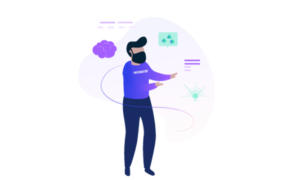
As the next 12 business days unfolded leading up to the event, the legal department reviewed contracts while everyone else within the organization chartered a course for themselves that was centered around what leadership identified as the main priorities: generate excellent content, drive registration, and maintain a community-first mentality.
The core team met twice a day to take inventory of where key initiatives stood and what still needed to be done, and everyone else charged forward on ambitions that aligned with critical deliverables, such as the coordination and recording of 24 different breakout sessions.
Some projects came together nicely. Others were more challenging, as roadblocks presented themselves in some form or another on several occasions, starting with the weather the week of March 2.
“The forecast wasn’t good,” Mellor said. “We needed some blue sky for the keynote video, and there was only one day that week that called for such conditions. So, we went for it.”
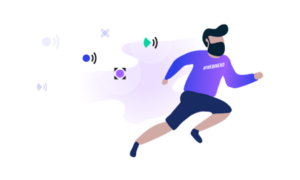
As well, despite finding pictures of a salt mine cave that the video production crew thought would serve as an ideal backdrop for one segment of the keynote, it took some investigating to find out exactly where it was—and then some additional time to gain access.
And then there was the initial shooting location for the live portion of the keynote: The Cliff Lodge at Snowbird. As Utah ski resorts started to shut down due to increased concerns about COVID-19, Domo’s events team had to look elsewhere—fast—for an alternative.
The group found one in a Webb Production broadcasting studio, which of course had to be set up for the on-stage presenters with social distancing in mind but also allowed Domo to bring its product team in via Zoom.
By the time March 18 rolled around, Domo was ready to rock. And at 10 a.m. MT, just as the earthquake was about to turn three hours old, Domopalooza 2020 aired as a 90-minute collection of powerful messages that transported the audience everywhere from the highest peaks in Utah to the floor of a Pep Boys service garage in Philadelphia.
Domopalooza 2020 was one of the first major tech conferences that morphed into an online event in response to the coronavirus pandemic. And while consensus at Domo is that there were some additional moves that could’ve been made—even under the intense pressure of such a tight deadline—viewer feedback suggests the company struck the right chords.
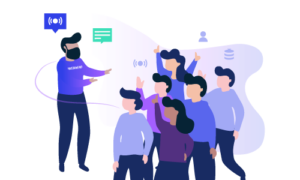
“Your virtual event was so polished, effective, and engaging that it made me seriously consider whether in-person events were even necessary anymore,” wrote one attendee who watched from his home in Nashville. “Being able to ‘travel’ across Utah, go on-site with your customers, and see some of the future innovations Domo is bringing was simply incredible.”
In the interest of assisting other organizations that are considering or have planned the type of remote event that is quickly becoming de facto in these turbulent times, Domo has put together a list of best practices. The list is based on what its employees closest to the production of the conference learned over one wild-but-rewarding three-week period, and it goes as follows:
1 – Use data

Before doing anything else, Domo used data to analyze the previous five Domopaloozas. The team looked at who attended, what their job titles were, where they came from, what industries they worked in, what content they liked most, and more.
With that insight, leadership was not only able to prioritize what went into the program, but determine how long it should be and how it should flow, what types of pieces needed to be created to appeal to both execs and day-to-day users, and how the popular “sneaks” (sneak-peek) portion of Domopalooza should be handled. “We couldn’t fly blind,” Mellor said. “We had to have something concrete to work from, and that was it.”
2 – Set Targets

Typical attendance for Domopalooza is just over 3,000 people. But once plans for this year’s event changed to online, and therefore limitations on venue space and time no longer existed, Mellor used it as an opportunity to move the line to 10,000. “I just thought, ‘Without travel costs and other logistical constraints, why couldn’t we reach two to three times more people within our customers’ groups?’” he said.
The strategy worked. Domopalooza ultimately garnered more than 9,000 registrations—about four times as many as last year—and more than 12,000 viewers. What’s more, people from 80 countries logged on to watch. At the in-person event last year, 28 countries were represented. “Setting a higher bar was galvanizing,” said Julie Kehoe, Domo’s chief communications officer. “It motivated everyone to push harder, to see what was possible.”
3 – Meet and Rally
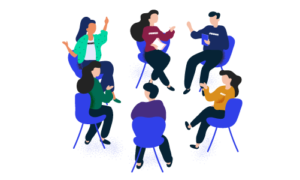
To make sure nothing slipped through the cracks and everything moved in concert across all areas of the business, key stakeholders got together twice a day and gave updates on where initiatives they were responsible for standing. “We couldn’t afford to let any decision sit for more than 12 hours,” Mellor said.
These quick huddles (or “standups,” as they’re often called) revolved mainly around hot-button items of the day and served to help the team monitor what kind of progress was being made on them. The meetings also inspired everyone to be as flexible as they could, as updates often included a nod to how someone—or even a group—had handled an unexpected or unfamiliar situation with proficiency.
4 – Create an engaging experience

Given the opportunity to do Domopalooza in a completely different way, the team looked in every possible direction to make the event one to remember. “We could’ve done the equivalent of one basic, pre-recorded webinar,” Mellor said, “but that would’ve flown in the face of our creative spirit, a characteristic that’s at the heart of who we are.”
Instead, Domo leveraged the medium in a way that allowed attendees to see more of Utah than Salt Lake City, and go inside the places where Domo customers work. The team also made room for a live component, which gave the audience the ability to send questions to leadership through social media, via the hashtag #askDP20.
Industry analysts got boxes featuring local coffee, cookies and a mug, to make them feel a little closer to where they were originally going to be for the event. And breakout session speakers received kits that included mics, props and lights, as well as images they could use on Twitter to promote their seminars.
The approach resonated. The breakout sessions—which were taped and then made available on-demand immediately following the main program—drew more than 3,100 distinct visitors.
5 – Pick the right technology

One of the real luxuries Domo had in the process was its ability to call on Webb Production for anything. While the company was originally hired to put on a traditional, in-person conference, it was quick to retool the plan when the situation changed.
Webb’s value didn’t end there, though. It also let Domo use its studio for the live portion of the program, and came up with an impressive stage design that included a giant LED screen, which was used to display images of Utah designed to bridge the gap between customer and vendor.
Additionally, Webb brought Boxcast to the table—a platform that allowed Domo to stream live video to the audience, trim the video without taking the stream offline, and offer replays around the world, including a fully translated Japanese version.
For the breakout sessions, Domo used ON24, a digital experience solution that offered a configurable front end and allowed the audience to see the speaker and their slides simultaneously. It also gave Domo the freedom to add widgets, giving the viewer the ability to customize their screen.
Lastly, Domo took full advantage of social media, especially during the event. “Even though we were miles away from our customers,” Kehoe said, “we wanted to create an intimate, interactive experience for them—and channels like Twitter and Instagram were a good way to do it.” To wit: Domo pulled in 86 questions via #askDP20, and calculated a “reach” the next day of 659,335 people (for a spread of 11.2 million).
